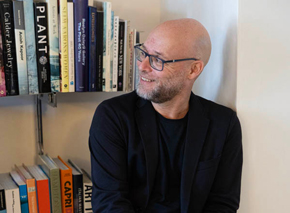From Australia’s past: James Larra – from convict to a most colourful personality
James Larra was born in 1749 in London. His correct family name was Lara, and he was a descendant of a prominent Spanish-Jewish family.

The Woolpack Hotel, 1938
On 12 December 1787, aged 38, he was sentenced to death at the Old Bailey for having stolen a tankard worth five pounds. The sentence was changed to transportation, and he arrived with the Second Fleet in June 1790 on board the ‘’Scarborough’’. He was well regarded by the authorities, and the same year succeeded Constable John Harris as principal of the night watch. In September 1794, he received a conditional pardon and, on 10 November, married Susannah Wilkinson, the widow of a convict, John Langford.
In May 1797, he received his first grant of fifty acres and devoted himself to farming but this did not last long as the following year, he decided to venture into what was becoming very popular and lucrative – the liquor trade. James received one of the colony’s first liquor licences in September 1797 and the Freemasons’ Arms (also known as the Masons Arms) in Parramatta was amongst the first of Australian pubs to be granted a liquor licence. In the early days of the colony, ‘rum’ (a name given to any kind of spirits) was freely manufactured and traded and drunkenness became a significant problem. While beer had been carried and possibly brewed aboard the First Fleet, most of the population preferred something stronger. This was often “grog”, a watered-down mixture of rum and molasses. It was illegal for convicts to buy alcohol, but the prohibition was impossible to enforce. The first record of alcohol-related deaths dates from 1793. Among the measures Governor Hunter took to control drinking were the issuing of liquor licenses and the first liquor tax – a duty of one shilling a gallon on imported liquor – was introduced and applied to certain districts within the colony.
James built the Freemasons’ Arms, around 1798. The eating house attached to the inn thus became Australia’s first restaurant. At that time, Parramatta had four other inns: the Yorkshire Grey, the Salutation, the Crown and the Ship. The naming of the Freemasons’ Arms is intriguing, considering that it was illegal at the time to form a freemason’s lodge. Masonic meetings at the time were sometimes held on board ships. In 1803, a number of people were arrested for holding a masonic meeting, and an order was published forbidding meetings without the express permission of the Governor. James sold the inn in 1821, and the name was changed to the Woolpack Hotel. The name recognised the growing importance of the local wool industry. In 1895 the Woolpack was rebuilt across the street from its original location and continues to trade today.
On 4 June 1800, James was granted a free pardon and soon extended his activities to commercial enterprises, selling wheat and animal food to the government and opening a well-stocked store on his premises. In 1801, he was one of the first to join the Loyal Parramatta Association and was promoted to sergeant-major in 1804. In April that year, he received a grant of one thousand acres in the Bankstown district, which he called Harris Farm, with a further two hundred acres being held in trust for his nieces Elizabeth and Hannah, the daughters of John Harris who had left the colony. Another first for James was becoming the first newspaper agent in Australia when the Sydney Gazette was deposited at his store in 1803.
Following the Rum Rebellion, James was granted a further six hundred acres at the Upper Nepean, and in January 1809 he was appointed as ‘vendue master (one who is able to sell any property) for the District of Parramatta’.
Suzannah died in 1811, and in 1813 James married Phoebe, the wealthy widow of John Waldron, who had been the proprietor of the Duke of York Inn in Sydney. At that time, James was at the height of his career and he was known to have been called ‘the commercial nabob of Parramatta’. However, 1814 was not a good year. It marked the beginning of his decline as well as Phoebe dying and rumour had it that he may have caused her death by ‘improper sexual practices’. He was tried and acquitted, but his reputation and business had suffered greatly. He tried unsuccessfully to sell all his business interests and leave the country. However, he kept his liquor licence and tendered meat for government stores but ran into further financial difficulties and mortgaged his farms and the inn.
In 1817 he married for a third time to Mary Clarke, a convict and an English actress. Her needs led to his financial ruin. In May 1821, James sent Mary to England to collect funds but, unfortunately in June, he was declared bankrupt. Mary returned to Sydney in July 1822 and they separated soon after for many reasons including her using the money for herself and creating debts in James’s name. As a result, James was sent to debtors’ prison. Elizabeth Harris (first wife of John Harris) rescued him and James moved in to her home in Ashfield where he lived for six years. In 1837 he moved to Parramatta.
James died, aged 90, on 11 February 1839 and was buried in the Jewish section of the Devonshire Street cemetery in Sydney. His passing went unnoticed in the press. He was, however, certainly the most prominent Jew in the earliest years of the colony and one of the most colourful personalities and successful emancipists of his time. His downfall was not entirely undeserved, but he merited the quality bestowed on him as ‘James Larra, an honest Jew’. His name is preserved in the district where he had lived, by Larra Place at Telopea (Dundas) and Larra Street at Yennora (Guildford).
To continue some further history relating to James’ ‘’pub’’, no other hotel in the Commonwealth of Australia can be compared with Parramatta’s fabulous Woolpack. The historic settlement of Parramatta has had the unique name of Woolpack associated with its destiny.
The AJHS acknowledges the following references in the preparation of this story
Australian Dictionary of Biography (GFJ Bergman); Australian Jewish Historical Society, Vol 5, Part 3, 1060, PP 97-130; Extracts taken from The Fabulous “Woolpack’’ Story by Collinridge Rivett, Parramatta Press 1956.

The Australian Jewish Historical Society is the keeper of archives from the arrival of the First Fleet in 1788 right up to today. Whether you are searching for an academic resource, an event, a picture or an article, AJHS can help you find that piece of historical material. The AJHS welcomes your contributions to the archives. If you are a descendent of someone of interest with a story to tell, or you have memorabilia which might be of significance for the archives, please make contact via www.ajhs.com.au or its Facebook page.








Officers of the Baudin scientific expedition from France, in Sydney in 1804, dined at James Larra’s inn. Their diary noted the elegance that they should never have believed possible in the colony. “The best Madeira, sherry, port and wines from the Cape and Bordeaux in chrystal glasses accompanying a meal prepared by a French cook and two other Frenchmen, both convicts.”
James Larra was included among the dinner guests at the welcoming of Governor Macquarie.
After reading his interesting epitaph it sounds as if ‘James Larra’ was also a good politician….